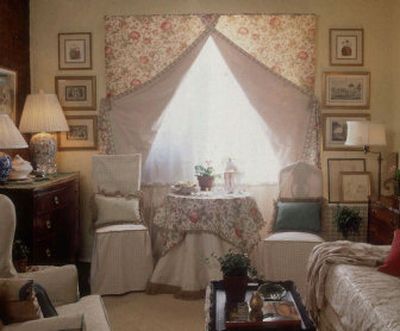Small Spaces: Inmates design furniture for tight spaces

PHILADELPHIA — The goal had apocalyptic overtones: to design furniture for survivors consigned to tight, temporary shelters after a natural disaster.
To carry it out, social activist and conceptual artist Peggy Diggs turned to a population that is expert at compact living.
Prison inmates.
Over more than 18 months, the 60-year-old instructor from Williams College in Massachusetts commuted to Montgomery County, Pa., and brainstormed with 15 residents, most of them lifers, at maximum-security Graterford Prison in Skippack Township.
WorkOut, an exhibit that ran through Oct. 25 in the appropriately cramped foyer of the Broad Street Ministry in Center City Philadelphia, reveals the fruits of their collaboration: five graphically vivid, expandable desk/storage containers.
Each unit is made of thick cardboard — a familiar material to those acquainted with the “deprivation of incarceration,” Diggs says — done up in bold colors and intricate patterns designed and painted by the prisoners.
Over the project’s long and bumpy haul, the inmates refined their concepts and revealed a humanity the artist hadn’t expected.
“I had the picture of foaming-at-the-mouth people who would hurt me the minute I came in,” Diggs said. Instead, the prisoners were eager to use their talent and insights to benefit a world few will see again.
“They did all these fancy handshakes with me, so I gathered that was a good sign,” Diggs said of an early encounter.
Eddie Ramirez, 29 and already 10 years into a life sentence for robbery-homicide, was intrigued by the chance to make something useful.
“I was a destroyer of things,” the former graffiti artist said in a collect call from Graterford. “Now I’m a builder of things.”
Ramirez conceived the concept for the desks, which expand from 3 to 6 feet and contain shelf space.
About 40 pieces were constructed by Diggs and a helper, then donated to the Riverview Home for the Aged, a city-run personal-care facility in Northeast Philadelphia. Diggs has not tallied the costs involved but expects grants to cover the expense.
The inmates can’t see the exhibit. But they applied their graphic designs to the cardboard pieces, and they “looked beautiful,” said Ramirez, who created a locking-S pattern inspired by wrought iron.
“I got to do something for people in that shelter,” he said proudly. “I got to use my brain.”
Practical projects such as these connect prisoners to society, says Jane Golden, director of the city’s Mural Arts Program. “This process, thinking about furniture, how it would benefit others’ lives, was really a wonderful exercise in empathy … in reconciliation.”
The inspiration for WorkOut came to Diggs in a 2004 article in a London publication. The story was about a “secret report” predicting the effect a drastic climate might have on Europe. Sea levels could swamp major cities, the report warned, causing famine, riots, and widespread population dislocation.
The dire scenario gave Diggs her seed. With an initial grant of $10,000 from New York’s Creative Capital Foundation, she contacted Golden, who introduced Diggs to some of the Graterford inmates who had worked on city murals.
“Everybody is expert at something,” Diggs said. “I like to seek out populations we normally consider unworthy of attention.”
The artist’s previous projects have tackled intentional poverty among those who opt for a simpler life (Quakers, for example) and what preparing for a terrorist attack entails for the modern consumer.
For WorkOut, “my goal had been to have several fabulous, far-ranging objects that I could get patents on, and that I could get into production so that these guys wouldn’t feel like toss-offs,” she said.
Diggs envisioned selling the prefab furniture, more folk art than IKEA, and turning profits over to the prisoners’ families. “That was the big plan.”
She quickly ran up against reality.
Inmates are prohibited from profiting from their prison endeavors. On top of that, early models were too crude to interest industrial designers. And Diggs was unsure whether the furniture designs had enough whimsy.
Despite initial enthusiasm, some inmates wouldn’t complete the “homework” assignments she gave them during her visits every three weeks. And occasionally, tempers flared. At nearly every turn, Diggs said, she thought, “Oh, no, this isn’t going to happen.”
“When she came in,” said prisoner Darrell “Van” van Mastrigt, 38, “I was skeptical. But she’s very energetic. She’s a big motivator.”
The lifer, from the Pittsburgh area, who was convicted of first-degree homicide, made a model of a bed that also serves as a desk and storage space. He also created a complex design with another inmate and spent hours in his cell painting copies on material that can be applied, like a decal, to a surface.
In the exhibit, the graphic appears in silver on a red desk, a stunning combination, though Diggs had to persuade van Mastrigt that “normal, nice people” would appreciate the tattoo-inspired motif.
As months passed, the artist discovered that prisoners are problem-solvers “because they have to be.” The project became less about a polished object to be mass-produced and more about “the authenticity of these men’s experience.”
Many use cardboard to create storage space in their 6-by-10-foot cells. With its connotations of deprivation, cardboard became the material of choice for the project.
The lavish graphic designs afforded those behind bars a luxury.
“It’s a way to communicate,” van Mastrigt said. “We can’t go out there, but we can send our ideas out through our art.”